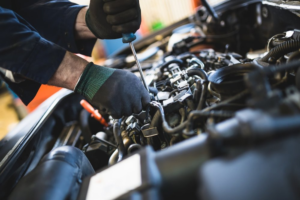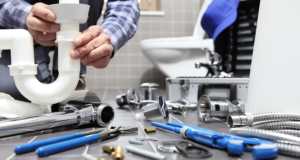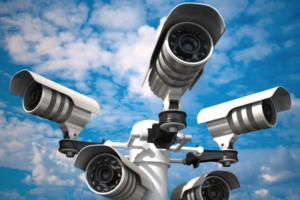Owning a car comes with many benefits and responsibilities. Keeping your vehicle in peak condition requires regular oil changes and other maintenance. However, the electrical system is one of the most overlooked aspects of vehicle maintenance.
Auto Electrical Repair can seem daunting, but with the right tools and knowledge, they can be fixed quickly and easily. Here are some tips to help you get started.

The electrical system in your vehicle is responsible for everything from turning on the headlights to starting the engine. As a result, it’s incredibly important to ensure that the electrical components are functioning properly. This is why it’s essential to have auto electrical repair services performed regularly. In addition to ensuring that your car is safe and reliable, these services will also help prolong your vehicle’s life and increase its resale value should you ever decide to sell it in the future.
The basic components of a car’s electrical system include the battery, alternator, and starter. The battery provides power to all of the electronic components in your vehicle, while the alternator charges the battery and powers the car while it’s running. The starter is responsible for turning on the engine using the battery’s electricity.
Most electrical issues are caused by a damaged or old battery, a faulty alternator, or corroded wiring. These problems can often be fixed with simple tools, such as a multimeter and wire strippers or cutters. However, more complicated issues may require a professional to diagnose and fix them.
Auto electrical problems are not only annoying, but they can also be dangerous if left untreated. That’s why it is so important to be aware of the warning signs of an automotive electrical issue and have them addressed as soon as possible.
When it comes to auto electrical repairs, a skilled technician has the knowledge and experience necessary to diagnose and fix any problem that arises. They will use specialized equipment to test the different electrical components of your car, and they will be able to pinpoint the root cause of any issue quickly and accurately.
In addition to providing auto electrical repairs, a qualified technician can also offer preventive maintenance for your vehicle’s electrical systems. This will ensure that your vehicle is operating at peak performance and that all of its components are working properly. They can also help you save money by catching any potential problems early on and preventing them from developing into more costly repairs down the road.
Troubleshooting
The electrical system in your car is responsible for many essential functions, including the engine starter, power steering, headlights and air conditioning. When it starts malfunctioning, you will need to have it repaired promptly. Car electrical repair requires a skilled technician with the right tools to do the job properly.
A good starting point is to refer to the owner’s manual for your vehicle. It should contain a circuit map that will explain which systems operate with each other. You can also use a multimeter to test for voltage and current levels in different parts of the electrical system. This will help you identify the source of the problem.
Most car electrical problems are caused by worn or broken wires, loose connections or a defective battery. The best way to prevent these issues is by performing routine maintenance.
You should also keep an eye out for warning signs, like a dimming headlight. This could indicate that the battery is weakening and needs replacement. Likewise, if you notice any other unusual electrical symptoms, it’s best to have them checked by a professional.
Modern car electrical systems are complex and require specialized diagnostic equipment to understand what’s going on. Attempting to troubleshoot or repair a car electrical problem without proper expertise can result in damage to other components.
The fuse box in your vehicle is designed to prevent overvoltage and short-circuiting by breaking the circuits that draw too much electricity. If you find that you are replacing fuses frequently, it may be a sign of electrical problems.
A faulty alternator is another common cause of electrical issues. A bad alternator can drain the battery, which will then cause the electrical systems in your car to shut down. This can lead to a dead battery, and if left unattended, it could cause the engine to stop running.
A professional auto electrical repair shop like 10 Degrees Automotive can diagnose the issue and perform a complete diagnostic service. They can also replace a faulty alternator and repair or replace any wires that are damaged or corroded.
Repairing a blown fuse
When one of your vehicle’s electrical components fails, it may be a simple matter of replacing a fuse. Fuses are designed to blow when a circuit is overloaded or damaged, protecting the wires and device from excessive power. Symptoms of a blown fuse include a loss of function, such as the failure of lights or the horn, and often an unpleasant burning smell.
Changing a fuse is as easy as visiting your home’s breaker box, and most auto repair shops have a tool to do the job for you. The first step is to locate the fuse panel and find its cover. Inside, you will see a range of colors and numbers that denote different amperages, while the diagram on the reverse side shows what each fuse is responsible for. If you have a multimeter, you can test the fuse by placing a probe on each end of the fuse to measure ohms. A blown fuse will reveal a reading of 0 ohms.
The next step is to determine what caused the fuse to blow. It could be a faulty component drawing too much power, a short circuit, or a bad connection between the conductors supplying electricity to the fuse. Fuses also blow due to over age or corrosion. If you are unsure what the cause is, it’s best to take your car to a professional auto shop for inspection.
If you are able to replace the fuse, it’s important to use one of the same amperage as the original. Using the wrong amperage will result in the new fuse blowing soon after replacement, and it can also be dangerous to your vehicle.
If multiple electrical components fail at once, this is a sign of a larger problem within the wiring harness or internal computer that requires professional assistance. A professional technician will be able to determine the root of the problem and get your vehicle back on the road.
Preventive maintenance
A car’s electrical system is a vital component that keeps everything running smoothly. It comprises the battery, alternator, starter motor and a network of wires and fuses. A problem with the electrical system can affect many other parts of the vehicle, from dimming headlights to difficulty starting the engine. The best way to prevent electrical problems is by conducting regular maintenance and repair work. A good auto repair shop can help you determine what the problem is and recommend the right solution.
When it comes to electrical preventive maintenance, it is important to keep in mind that there are many different types of equipment and that each will require a different schedule. However, all equipment needs to be serviced regularly to ensure that it is in good working order and does not pose a safety risk. If you neglect to stick to your electrical preventive maintenance schedule, it may result in costly repairs, loss of productivity, and even a fire that could endanger the lives of your employees.
Electrical malfunctions are one of the leading causes of fires in industrial and manufacturing settings, and they are largely preventable. Proper preventive maintenance can catch small flaws before they become major issues, preventing fires and saving money on unnecessary repairs and downtime. A skilled electrician can conduct routine inspections and spot any potential problems before they cause a fire.
It is important to choose a reputable auto electrical repair shop that has experience working on your type of vehicle and is licensed and insured. You should also check online reviews to find a shop that has a good reputation for customer satisfaction. Also, remember to pay attention to warning signs such as dimming lights or a battery warning light on the dashboard, which are usually early indicators of a problem with your vehicle’s electrical system. It is also a good idea to ask for recommendations from friends and family. By taking the time to find a good auto electrical repair shop, you can avoid expensive electrical repairs down the road. By following these tips, you will be able to enjoy peace of mind and get your vehicle back on the road quickly.


